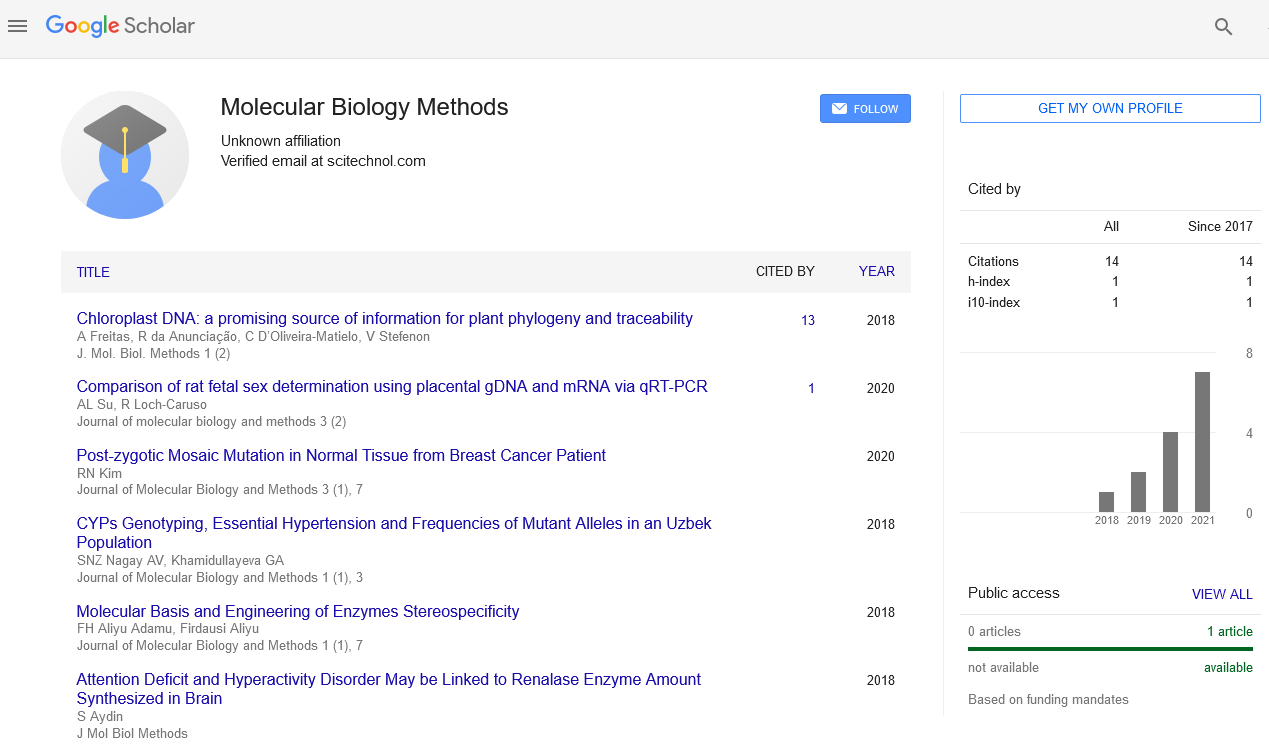Perspective, J Mol Biol Methods Vol: 7 Issue: 1
Immunochemical Techniques: Principles, Applications, and Innovations
William Wajzer*
1Department of Biological Sciences, University of Silesia in Katowice, Katowice, Poland
*Corresponding Author: William Wajzer,
Department of Biological Sciences,
University of Silesia in Katowice, Katowice, Poland
E-mail: wajzerwilliam@edu.pl
Received date: 26 February, 2024, Manuscript No. JMBM-24-136937;
Editor assigned date: 29 February, 2024, PreQC No. JMBM-24-136937 (PQ);
Reviewed date: 14 March, 2024, QC No. JMBM-24-136937;
Revised date: 21 March, 2024, Manuscript No. JMBM-24-136937 (R);
Published date: 28 March, 2024, DOI: 10.4172/JMBM.1000156
Citation: Wajzer W (2024) Immunochemical Techniques: Principles, Applications, and Innovations. J Mol Biol Methods 7:1.
Description
Immunochemical techniques are invaluable tools in modern biological research, clinical diagnostics, and therapeutic developments. These techniques develops the specificity of antibodies to detect and quantify target molecules with high precision and sensitivity. From simple assays to sophisticated immunoassays, these methods have revolutionized various fields, including medicine, biotechnology, and environmental science.
Principles of immunochemical techniques
At the heart of immunochemical techniques lies the interaction between antibodies and antigens. Antibodies, produced by the immune system in response to foreign substances (antigens), possess remarkable specificity, binding tightly to their cognate antigens. This antigen-antibody interaction forms the basis of immunochemical assays.
Enzyme-Linked Immunosorbent Assay (ELISA): ELISA is one of the most widely used immunoassay techniques. It typically involves the immobilization of an antigen on a solid surface, such as a micro plate, followed by the addition of an antibody conjugated to an enzyme. After washing away unbound components, the enzyme's substrate is added, leading to a detectable signal directly proportional to the amount of target antigen present.
Western blotting: Western blotting, or immunoblotting, is employed to detect specific proteins within a complex sample. Proteins are separated by gel electrophoresis based on size and then transferred to a membrane. The membrane is then incubated with antibodies that bind to the target protein. Visualization is achieved by adding enzyme-conjugated secondary antibodies or chemiluminescent substrates.
Immunohistochemistry (IHC): IHC is used to visualize the distribution and localization of antigens within tissues. Thin sections of tissue are treated to preserve antigenicity, followed by incubation with primary antibodies specific to the target antigen. Subsequent addition of labeled secondary antibodies allows for visualization under a microscope.
Flow cytometry: Flow cytometry enables the analysis of cells based on their surface markers or intracellular components. Cells are labeled with fluorescently conjugated antibodies and passed through a flow cytometer, where they are individually analyzed based on fluorescence emission. This technique is invaluable in immunophenotyping and cell sorting.
Applications of immunochemical techniques
The versatility and sensitivity of immunochemical techniques render them indispensable in various fields, including:
Clinical diagnostics: Immunoassays are routinely used in clinical laboratories for the detection of biomarkers indicative of diseases such as cancer, infectious diseases, and autoimmune disorders. ELISAbased tests, for instance, are employed for the quantification of hormones, enzymes, and tumor markers in patient samples.
Pharmaceutical development: Immunochemical techniques play a crucial role in drug discovery and development. They are utilized for the characterization of therapeutic proteins, monitoring of protein expression levels in cell culture supernatants, and assessment of product quality during manufacturing processes.
Environmental monitoring: Immunoassays are employed in environmental science for the detection of pollutants, toxins, and contaminants in water, soil, and air samples. These techniques facilitate rapid and sensitive detection of substances such as pesticides, heavy metals, and microbial toxins.
Food safety: Immunochemical techniques are instrumental in ensuring the safety and quality of food products. They are utilized for the detection of allergens, toxins, and pathogens in food matrices, enabling regulatory compliance and protection of public health.
Immunochemical techniques represent a cornerstone of modern biology, medicine, and biotechnology. Their unparalleled specificity, sensitivity, and versatility make them indispensable tools for research, diagnostics, and therapeutic development. Continued innovation in this field holds promise for further advancements, paving the way for enhanced disease detection, personalized medicine, and environmental monitoring.
 Spanish
Spanish  Chinese
Chinese  Russian
Russian  German
German  French
French  Japanese
Japanese  Portuguese
Portuguese  Hindi
Hindi 